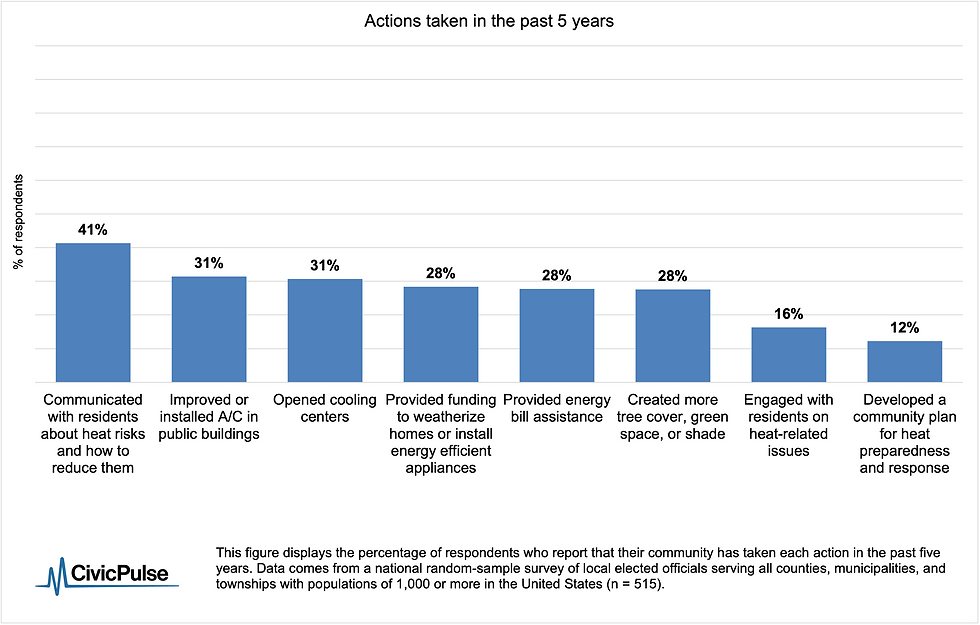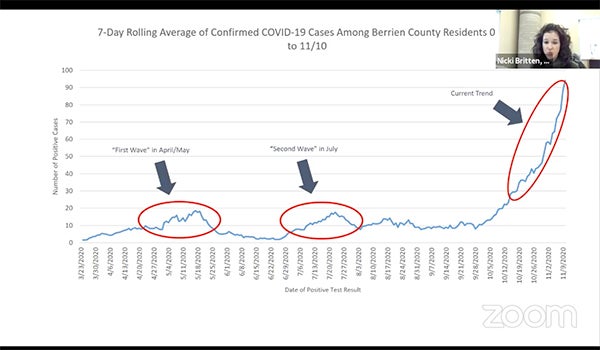Early Summer Hailstorms Cause Significant Landscape Damage

Table of Contents
Assessing the Damage After a Hailstorm
Quickly surveying your property after a hailstorm is crucial to understand the extent of the damage and plan your next steps. Accurate assessment is vital, both for effective repair and for any potential insurance claims. Let's break down how to assess the damage to different parts of your landscape.
Damage to Lawns
Hail can bruise grass blades, leading to browning, discoloration, and potential loss of turf. Look for areas of significant discoloration and damage, paying close attention to the severity.
- Check for hail damage to newly seeded or sodded lawns: These are particularly vulnerable and may require reseeding or resodding.
- Note the severity of the damage: Minor bruising might require only watering and fertilization, while complete defoliation will need more extensive repair. Consider the density of the damage; are only patches affected or is it widespread?
- Document the extent of lawn damage: Take photos for insurance purposes, noting the affected area’s size and the severity of damage to support your claim.
Damage to Gardens and Plants
Examine your plants carefully for broken stems, torn leaves, bruised fruit, and other signs of hail damage. The impact of the hailstorm will vary depending on the plant's hardiness and the size of the hail.
- Assess the damage to both annuals and perennials: Some plants may recover with proper care, while others may require replacement.
- Check for damage to vegetable plants and fruit trees: Hail can damage blossoms, reducing yield. Check for bruising on fruits and vegetables.
- Note the specific damage: Detailed observations will be crucial when deciding on repair strategies and when making an insurance claim.
Damage to Trees and Shrubs
Look for broken branches, stripped bark, and damaged leaves. Large hail can cause significant structural damage to trees, potentially compromising their long-term health.
- Note any signs of significant damage that might require professional arborist attention: Large broken branches, deep bark damage, or leaning trees need expert assessment.
- Document damage with photos for insurance claims: Clear pictures showing the extent of damage to trees and shrubs are essential for successful claims. Include close-ups and shots showing the overall impact.
- Check for hidden damage: Sometimes, internal damage isn't immediately visible; a professional can assess the structural integrity of your trees.
Mitigating Hailstorm Damage to Your Landscape
Acting quickly after a hailstorm can significantly reduce long-term damage and promote faster recovery. Here’s what to do immediately after the storm and how to repair different areas of your landscape.
Immediate Actions
Remove broken branches and debris carefully to prevent further damage and injury, but avoid working during or immediately after the storm until conditions are safe.
- Avoid working during or immediately after the storm: Wait for the storm to pass and ensure the area is safe before beginning cleanup.
- Wear protective gear when removing debris: Gloves, eye protection, and sturdy footwear are essential to protect yourself from sharp objects and potential hazards.
Repairing Damaged Lawns
Water your lawn thoroughly to help alleviate stress and encourage recovery. Consider overseeding damaged areas.
- Use a quality lawn fertilizer: Choose a fertilizer formulated for promoting healthy growth and recovery after stress.
- Avoid heavy foot traffic on damaged areas: Give your lawn time to heal; avoid walking or driving on severely damaged spots.
- Consider aeration: If the damage is severe, aeration can help improve water and nutrient penetration to encourage regrowth.
Repairing Damaged Gardens and Plants
Prune damaged plant material carefully, removing only the affected portions to encourage new growth. Support damaged plants with stakes or other supports.
- Water thoroughly and apply a balanced fertilizer: This will help plants recover from the stress of the hailstorm.
- Consider using a fungicide: Hail damage can weaken plants, making them more susceptible to fungal diseases.
- Replace severely damaged plants: If a plant is beyond repair, replacing it is better than wasting time and resources on a failed recovery effort.
Repairing Damaged Trees and Shrubs
Contact a certified arborist for significant tree damage. Smaller branches can often be pruned by the homeowner, but improper pruning can cause more harm.
- Proper pruning techniques are essential to avoid further harm to the tree: Incorrect pruning can lead to disease and decay.
- For severe damage, tree removal might be necessary: If the tree is structurally unsound, removal is sometimes the safest option.
Insurance Claims and Professional Help
Document all damage with photos and videos for your insurance claim. Contact your insurance company promptly to report the damage and begin the claims process.
- Provide detailed documentation: Include close-up photos of the damage, as well as overview shots showing the extent of the impact on your landscape.
- Keep records of all communication with your insurance company: Note down dates, times, and the names of individuals you spoke with.
- Consider hiring landscaping professionals for significant damage or if you're overwhelmed by the task: Professionals have the expertise and equipment to handle large-scale repairs efficiently and effectively. They can also help with your insurance claim process.
Conclusion
Early summer hailstorms can inflict considerable damage on landscapes, but with prompt action and the right approach, much of the damage can be mitigated. By carefully assessing the damage, taking appropriate steps to repair affected areas, and seeking professional help when necessary, you can restore your outdoor spaces to their former glory. Remember to document everything for insurance purposes. Don't delay in addressing the effects of early summer hailstorms on your landscape; proactive steps will significantly improve the chances of a full recovery. Contact a landscaping professional today to discuss your specific needs and start the process of repairing your hailstorm-damaged landscape.

Featured Posts
-
 How To Win Tickets For Tales From The Track
May 12, 2025
How To Win Tickets For Tales From The Track
May 12, 2025 -
 Update Edan Alexanders Imprisonment By Hamas Potential Release
May 12, 2025
Update Edan Alexanders Imprisonment By Hamas Potential Release
May 12, 2025 -
 Zhang Weili Vs Valentina Shevchenko A Dream Matchup For Mma Fans
May 12, 2025
Zhang Weili Vs Valentina Shevchenko A Dream Matchup For Mma Fans
May 12, 2025 -
 Drag Baby Mamas Ru Pauls Drag Race Season 17 Episode 13 Preview
May 12, 2025
Drag Baby Mamas Ru Pauls Drag Race Season 17 Episode 13 Preview
May 12, 2025 -
 Crazy Rich Asians A Look At The Future On Max
May 12, 2025
Crazy Rich Asians A Look At The Future On Max
May 12, 2025
Latest Posts
-
 Local Health Department Issues Heat Advisory Due To Extreme Temperatures
May 13, 2025
Local Health Department Issues Heat Advisory Due To Extreme Temperatures
May 13, 2025 -
 Heat Advisory Issued For Paso Robles How Hot Will It Get
May 13, 2025
Heat Advisory Issued For Paso Robles How Hot Will It Get
May 13, 2025 -
 Sporne Iz Ave Marinike Tepi Shta Kazhe Natsionalni Savet Roma
May 13, 2025
Sporne Iz Ave Marinike Tepi Shta Kazhe Natsionalni Savet Roma
May 13, 2025 -
 Govor Mrzhnje Iz Ave Marinike Tepi I Reaktsi A Natsionalnog Saveta Roma
May 13, 2025
Govor Mrzhnje Iz Ave Marinike Tepi I Reaktsi A Natsionalnog Saveta Roma
May 13, 2025 -
 Health Advisory Department Urges Precautions Amidst Rising Temperatures
May 13, 2025
Health Advisory Department Urges Precautions Amidst Rising Temperatures
May 13, 2025
